
The Order of Merit of the Federal Republic of Germany is the only federal decoration of Germany. It is awarded for special achievements in political, economic, cultural, intellectual or honorary fields. It was created by the first President of the Federal Republic of Germany, Theodor Heuss, on 7 September 1951. Colloquially, the decorations of the different classes of the Order are also known as the Federal Cross of Merit (Bundesverdienstkreuz).
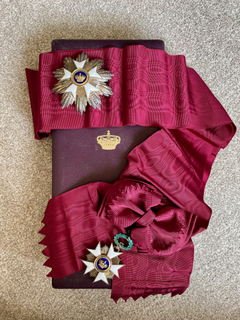
The Order of the Crown is a national order of the Kingdom of Belgium. The Order is one of Belgium's highest honors.

Konstantin "Koča" Popović was a Yugoslav politician and communist volunteer in the Spanish Civil War, 1937–1939 and Divisional Commander of the First Proletarian Division of the Yugoslav Partisans. He is on occasion referred to as "the man who saved the Yugoslav Partisans", because it was he who anticipated the weakest point in the Axis lines on the Zelengora–Kalinovik axis, and devised the plan for breaking through it during the Battle of Sutjeska, thus saving Tito, his headquarters and the rest of the resistance movement. After the war, he served as the Chief of the General Staff of the Yugoslav People's Army, before moving to the position of Foreign Minister and spent the final years of his political career as the Vice President of Yugoslavia.

The Order of the Patriotic War is a Soviet military decoration that was awarded to all soldiers in the Soviet armed forces, security troops, and to partisans for heroic deeds during the German-Soviet War, known since the mid-1960s in the former Soviet Union as the Great Patriotic War.
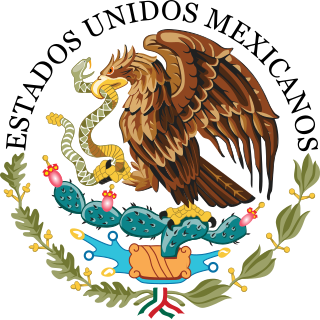
This is a list of military decorations awarded by the United Mexican States as part of the Mexican Honours System.

Order of the Three Stars is the highest civilian order awarded for meritorious service to Latvia. It was established in 1924 in remembrance of the founding of Latvia. Its motto is "Per aspera ad astra", meaning "Through hardships to the stars". The Order has five ranks and three grades of medals of honour.
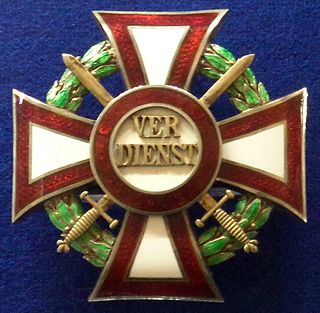
The Military Merit Cross was a decoration of the Empire of Austria and, after the establishment of the Dual Monarchy in 1867, the Empire of Austria-Hungary. It was first established on October 22, 1849 and underwent several revisions to its design and award criteria over the years of its existence. It became obsolete in 1918 with the dissolution of the Austro-Hungarian Empire.
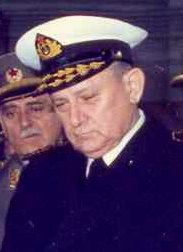
Branko "Đuro" Mamula was a Serbian politician and Yugoslav officer who participated in World War II in Yugoslavia. He was later the Minister of Defence of Yugoslavia from 1982 to 1988.
The War Cross is a military decoration of Greece, awarded for heroism in wartime to both Greeks and foreign allies. There have been three versions of the cross, the 1917 version covering World War I, the 1940 version covering the Second World War and the Greek Civil War, and the 1974 version covering peacekeeping missions in the subsequent years.
Colombian military decorations date back as far as the founding of the country. An early decoration was the Cruz de Boyacá that was awarded to the generals who led their forces to victory in the Battle of Boyacá in 1819. This early decoration lives on today as an incarnation of the highest order presented by the Colombian state. There is one decoration higher, but it is only awarded for military conflicts in defence of Colombia. Other than military decorations, Colombia presents decorations on behalf of the National Government, decorations for the National Police, and decorations from the Congress of Colombia.
During World War II the Independent State of Croatia awarded a number of orders, decorations and medals.

The Order of the Condor of the Andes is a state decoration of the Plurinational State of Bolivia instituted on 12 April 1925. The Order is awarded for exceptional merit, either civil or military, shown by Bolivians or foreign nationals. There are six grades: Grand Collar, Grand Cross, Grand Officer, Commander, Officer, and Knight.
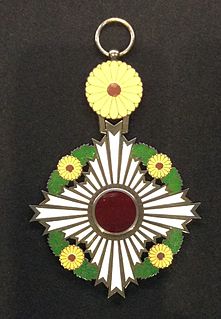
The Japanese honours system originated in the 1870s, shortly after the Meiji Restoration, and was modeled on European honour systems. The first order, the Imperial Order of Meiji was established in 1875, and was later renamed as the Order of the Rising Sun.

The Nazi Party Long Service Award, sometimes called the NSDAP Long Service Award, was a political award in the form of a badge of the Nazi Party.

The Medal "For Impeccable Service" was a Soviet military award for long service awarded to deserving members of the military personnel of the armed forces of the USSR, of the Interior Ministry of the USSR and of the Ministry for the Protection of Public Order of the USSR, to recognise ten, fifteen and twenty years of faithful and impeccable service to the state.

The House Order of Henry the Lion In German: Hausorden Heinrichs des Löwen, was the House Order of the Duchy of Brunswick. It was instituted by William VIII, Duke of Brunswick on 25 April 1834. The ribbon of the Order was red with yellow edges. It had five grades: Grand Cross, Grand Commander with Sash, Commander, Knight 1st Class, Knight 2nd Class, plus Medal of Merit for Science and Arts, the Cross of Merit and the Medal of Honour. The Order was named in honour of Henry the Lion, who remains a popular figure to this day.

The National Bank building in Belgrade is a monument of great importance, located in Belgrade, Serbia, at 12 King Petar St.
Orders, decorations and medals of Republika Srpska is a system of awards in Republika Srpska. There are 15 orders and 7 medals.
Milan Jovanović Stojimirović was a Serbian journalist, diplomat, manager of the Archive of Serbia, and chronicler of Old Belgrade. His vast collection of paintings, sculptures and artifacts were bequeathed to the Museum and National Library in Smederevo.

Title Badges were presented to Indian citizens who received certain formal titles of honour during British rule in India. They ceased to be awarded in 1947 on Indian independence.



















